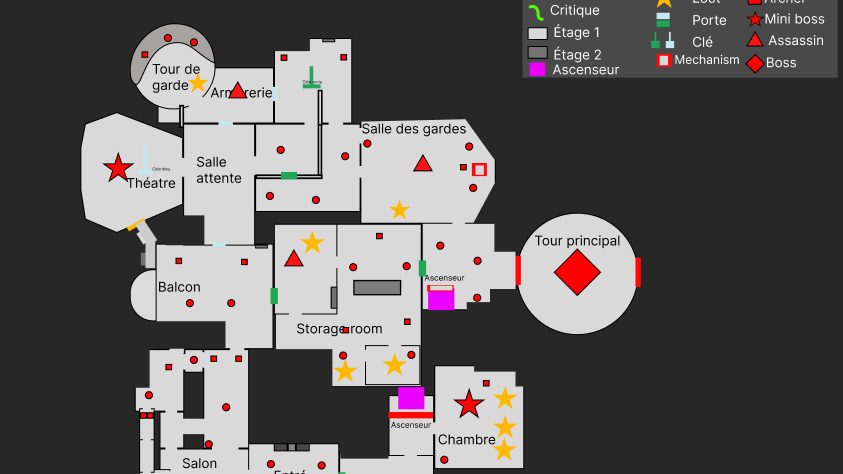What is Guano?
Guano is the final project of my bachelor's degree created using Unreal Engine 5. The goal was to create a game simulating a studio with approximately 25-30 people, combining various departments. We had around 3 months to produce the game, and after these 3 months, the game was released on Steam for free.
Guano is a game where you play as a silly seagull named Guano. The goal is to collect food by pooping on people's heads to steal their food. You can also obtain food by completing challenges and quests. Guano's objective is to free the great masters and liberate the island of Pohemeda.
My role
My role in this project was level design. I was mainly responsible for the lighthouse area and the navigation challenges. During this project, I had to work and communicate with almost every department to ensure that my work was visually appealing and aligned with the game's vision. I also had to integrate certain game elements into my parts of the level. This required consulting various documentation to make my sections function properly.
My role in this project was level design. I was mainly responsible for the lighthouse area and the navigation challenges. During this project, I had to work and communicate with almost every department to ensure that my work was visually appealing and aligned with the game's vision. I also had to integrate certain game elements into my parts of the level. This required consulting various documentation to make my sections function properly.
The main goal in level design was to make the character controller fun to navigate through the level, as this was a significant part of the enjoyment in the game.
The player had to enjoy using their flying character controller, which heavily utilized verticality. This was a challenge in itself.
Design intent for the lighthouse
For the lighthouse area, my main intention was to respect the game's identity while making this point of interest stand out by using a color contrast technique with the lighthouse. I also elevated the lighthouse to be the highest point of interest so that players would naturally be drawn to it, which proved to be effective during playtests. Inside the lighthouse, there is the first race that players can undertake in the game, so it was important for players to reach it early on, even though the game is open world.
From a gameplay perspective, my intention was to make this point enjoyable by creating a small underground course that was fun to traverse regardless of which entrance the player took.
Design intent for the challenges and the final race
The intention behind the challenges was mainly to make navigation enjoyable by introducing or practicing certain game mechanics such as buoys and different obstacles. In Guano, I handled two challenges within the open world. Each of these challenges has a timer and offers different rewards depending on the medal earned. I wanted both beginner and advanced players to have fun, so I introduced in each challenge a simpler but slower route and a more difficult but faster route.
I aimed for the easy path to still allow players to earn the gold medal, but with a tighter margin to reward the more challenging route. In both paths, I placed collectables to encourage players to try both possible routes. Since I had two challenges plus the final race, which has a style similar to the other challenges, I wanted the difficulty to gradually increase with each challenge by mixing various familiar and new obstacles.
Challenges
The challenges encountered in Guano with what I worked on sometimes included slowdowns due to the use of certain tools that were still in development. However, the biggest challenge as a level designer was the verticality and open-world nature of the game. These two aspects were the key features of our game due to our character controller. At the beginning, I found it difficult to make navigation in my parts of the level because the fact that the character could fly was different from anything I had worked on before.
With more iterations of playtesting and the development of mechanics encouraging fast and fun navigation, we achieved results that I am proud of. The team did a great job of making it smoother and as appealing as possible.
What I've learn:
What I learned during this project is the importance of focusing on the fun of the game's target audience to exploit this as much as possible in the game and finding ways to show it significantly in the game.
Another thing I learned is interdepartmental communication. The simulation of a studio really helped me understand the importance of speaking, for example, to the artists during the level design to make it as beautiful as possible but functional. Or talking to the programmer when the documentation doesn't answer the questions I have or to propose certain modifications in the character controller or in a mechanic to improve the game itself.
The game is available now!





